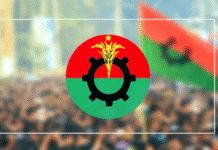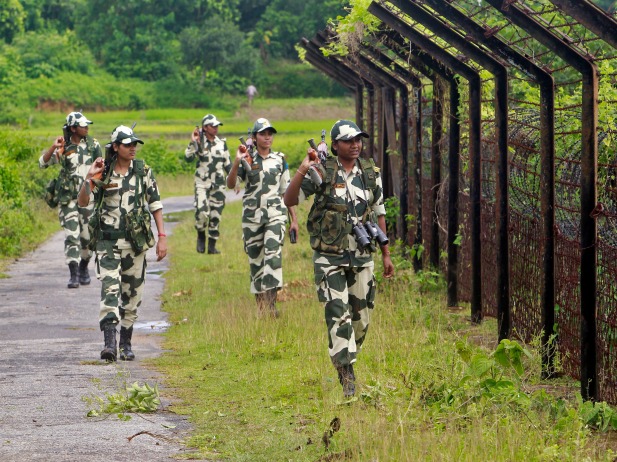TBS

The world held its breath as the night erupted in fire and vengeance. For the third consecutive night, Israeli warplanes struck deep into Iranian territory, while Tehran retaliated with two devastating volleys of ballistic missiles aimed at Israel.
The number of people killed or injured in Iran is still unknown, while Israel has shared its own casualty figures. Iran is now fighting alone, as its regional allies have stepped back. In response, it has launched a strong counterattack, aiming to damage Israel’s military and economy. But the effort appears weak, as Israeli airstrikes on Iran’s nuclear sites, oil refineries, and military bases have badly hurt the country.
Tehran faces an existential crisis. The strikes, which killed senior military commanders and nuclear scientists and targeted critical infrastructure, have exposed Iran’s military vulnerabilities and raised questions about the survival of its regime.
Nuclear talks with the US have gone down the drain, though US President Donald Trump still hopes to make the deal. Iran has blamed Israel as Israel presses forward with relentless aggression; Iran answers with everything it has. Prime Minister Benjamin Netanyahu’s call for Iranians to rise against their own government rings hollow as Israeli bombs rain down on their soil.
Yet the terrifying question lingers: What if this spirals out of control? What if the US is dragged into the conflict? The stakes are catastrophic—oil prices are already on the rise, global markets tremble, and the entire Middle East watches, bracing for the storm.
The next strike could change the equation. So, the question arises—What’s next for Iran?
The scale of damage and exposed weaknesses
Israel’s operation was a meticulously planned assault aimed at crippling Iran’s nuclear ambitions and military capabilities. The human toll was equally severe. The assassination of the commander of the Islamic Revolutionary Guard Corps (IRGC), the armed forces’ chief of staff, and other high-ranking officials has decapitated Iran’s military leadership.
The loss of nuclear scientists further hampers Tehran’s ability to rebuild its nuclear programme. These strikes have laid bare Iran’s vulnerabilities, contradicting the long-held perception of a formidable military capable of deterring Israeli aggression.

Iran’s first counterattack, using around 100 drones and a few missiles, was mostly stopped by Israeli and Jordanian defenses and caused little damage. This weak response—called the start of “Operation True Promise 3″—shows that Iran’s ability to strike back is limited.
Experts expected a stronger reaction, as Iran doesn’t want to look weak. But like after the killings of Qasem Soleimani and Ismail Haniyeh, Iran’s actions have again been more about words than real impact, likely because a bigger attack could trigger a dangerous war.

This severely damages Iran’s reputation and dependability as a military power in the region, a perception the country cannot afford.
The collapse of the Axis of Resistance
Iran’s regional influence, long sustained through its network of allied non-state actors—Hezbollah in Lebanon, Hamas in Gaza, the Houthis in Yemen, and Shia militias in Iraq—has been severely eroded. The assassination of Hezbollah leader Hassan Nasrallah in September 2024, coupled with targeted killings of senior officials and operatives via pager attack, has crippled the group’s operational capacity.
Similarly, Hamas has been decimated, with leaders Yahya Sinwar and Ismail Haniyeh killed, the latter on Iranian soil, exposing Tehran’s inability to protect its allies. The fall of Bashar al-Assad in Syria in December 2024 has replaced a key Iranian ally with a government hostile to Tehran’s interests.
In Yemen, Israeli strikes on Houthi-controlled Hodeida port and Sanaa airport have curtailed the group’s ability to act as Iran’s proxy in the Red Sea. Shia militias in Iraq remain active but lack the strategic weight of Hezbollah or Hamas.
The loss of these allies not only weakens Iran’s regional influence but also emboldens Israel, which gained ‘freedom of movement’ to target Iran’s nuclear programme once Hezbollah’s missile arsenal was neutralised.
The prospect of regime change
Israeli Prime Minister Benjamin Netanyahu has called for the Iranian people ‘to stand up for their freedom from an evil and oppressive regime,’ urging regime change in Tehran. He has done this before. Last year on 30 September, he urged the Iranians via a video message on X, “When Iran is finally free, that moment will come a lot sooner than people think— everything will be different.”
The current crisis is an existential moment for Iran’s leadership, as failure to retaliate decisively could signal weakness, potentially leading to the regime’s collapse. Conversely, a forceful response risks further Israeli or even American retaliation, placing Tehran in a strategic dilemma.
Israel’s strikes may be intended to spark a chain reaction of unrest, leveraging widespread domestic discontent over economic mismanagement, restricted freedoms, and minority rights. The 2022 “Woman Life Freedom” protests demonstrated the potential for mass mobilisation, but opposition groups, including Reza Pahlavi’s monarchist faction and the Mujahideen-e Khalq (MEK), remain fragmented and lack the cohesion to capitalise on any regime instability.

However, the mood in Iran is not that of rebellion, as it is hard to win over the citizens of a country while bombing them to the ground.
A regime collapse could lead to two scenarios: a power grab by radicals, who already dominate the military and economy, or a descent into chaos, as seen in post-regime Iraq and Libya. Either outcome would have profound implications for the Middle East, given Iran’s 90 million population and strategic location.
A hardliner-led government might adopt a more confrontational stance, accelerating nuclear ambitions to deter further attacks. Chaos, meanwhile, could destabilise the region, triggering refugee flows and proxy conflicts.
The current crisis is an existential moment for Iran’s leadership, as failure to retaliate decisively could signal weakness, potentially leading to the regime’s collapse. Conversely, a forceful response risks further Israeli or even American retaliation, placing Tehran in a strategic dilemma.
Moreover, it should be kept in mind that the toppling of Saddam Hussein led to prolonged instability and the rise of extremist groups, a cautionary tale for regime change in Iran.
Risks of regional escalation
The involvement of other regional and global powers remains a critical variable. Iran’s perception of US complicity in Israel’s strikes—despite denials from Secretary of State Marco Rubio—heightens the risk of attacks on American targets, such as bases in Iraq or the Gulf.
Iran could target US bases in retaliation, just like the 2020 strike on Ain al-Asad following Qasem Soleimani’s assassination. Such an attack could draw the US into direct conflict, a scenario which may result in a devastating consequential tail. President Trump’s commitment to avoid “forever wars” may be tested, particularly if American casualties occur, given Republican support for Israel’s push for regime change.
Unsurprisingly, Trump threatened Iran with a threat, “If we are attacked in any way, shape or form by Iran, the full strength and might of the US Armed Forces will come down on you at levels never seen before.”
Iran could also target Gulf states hosting US bases, such as Qatar’s Al Udeid Air Base, or energy infrastructure, as it allegedly did in Saudi Arabia in 2019. The Houthis might intensify attacks on Red Sea shipping, further disrupting global trade.
These actions could spike oil prices, exacerbating global inflation and benefiting Russia, whose oil revenues would bolster its war in Ukraine. Middle Eastern leaders have condemned Israel’s strikes, calling for de-escalation, but their discreet cooperation with Israel’s defence efforts last year complicates their position.
Economic shocks may be incoming
If Iran moves to blockade the Strait of Hormuz—the world’s most critical oil chokepoint—global markets would plunge into chaos. Nearly 33% of the world’s oil supply flows through this narrow passage, and any disruption would send prices skyrocketing, triggering economic shockwaves from Europe to Asia. The US and its allies would face an impossible choice: negotiate under Iranian pressure or risk a full-scale naval conflict to reopen the strait.
Meanwhile, in the Red Sea, Iran’s last major proxy—the Houthis—could unleash a new wave of attacks on commercial shipping. Already notorious for hijackings and missile strikes, the Houthis have shown they thrive on chaos. A sustained campaign could paralyse trade through the Suez Canal, compounding the global economic fallout. Insurance costs would soar, supply chains would buckle, and energy-dependent nations would scramble for alternatives.
Would the US strike back? Washington has vowed to keep Hormuz open, but direct military action risks dragging the region into war. Iran, cornered yet defiant, might gamble that the West lacks the stomach for another Middle East conflict. Meanwhile, China and Russia could exploit the instability, positioning themselves as power brokers while the US is bogged down.
The world is already on edge—oil prices are volatile, diplomacy is crumbling, and miscalculation looms. If Hormuz closes and the Red Sea burns, the crisis won’t stay contained. It will become everyone’s problem.
Iran’s immediate challenge is to craft a response that preserves regime legitimacy without inviting further devastation. Its nuclear programme, while damaged, retains expertise and possibly hidden enriched uranium, raising the spectre of a race to weaponisation as a deterrent—a scenario Israel’s strikes may paradoxically accelerate.
Diplomacy remains the most viable path to de-escalation, potentially through a deal on nuclear technology or Iran’s regional role. However, Iran’s withdrawal from scheduled nuclear talks in Oman signals resistance to negotiations under pressure, and Israel might be the one to blame.
The mood in Tehran seems to be that the negotiations can be revived, at least not any time soon. With the position the Americans have taken so far, some think that negotiations were part of the strategy with the Israelis to lull the Iranians into a false sense of security.
Israel’s strikes have reshaped the Middle East’s security landscape, weakening Iran but risking a prolonged conflict with unpredictable consequences. Whether Tehran’s regime survives, hardens, or collapses will determine the region’s trajectory.
The coming days will reveal whether Iran can muster a response to restore its deterrence or if Israel’s gamble on regime change will ignite a wider conflict.










